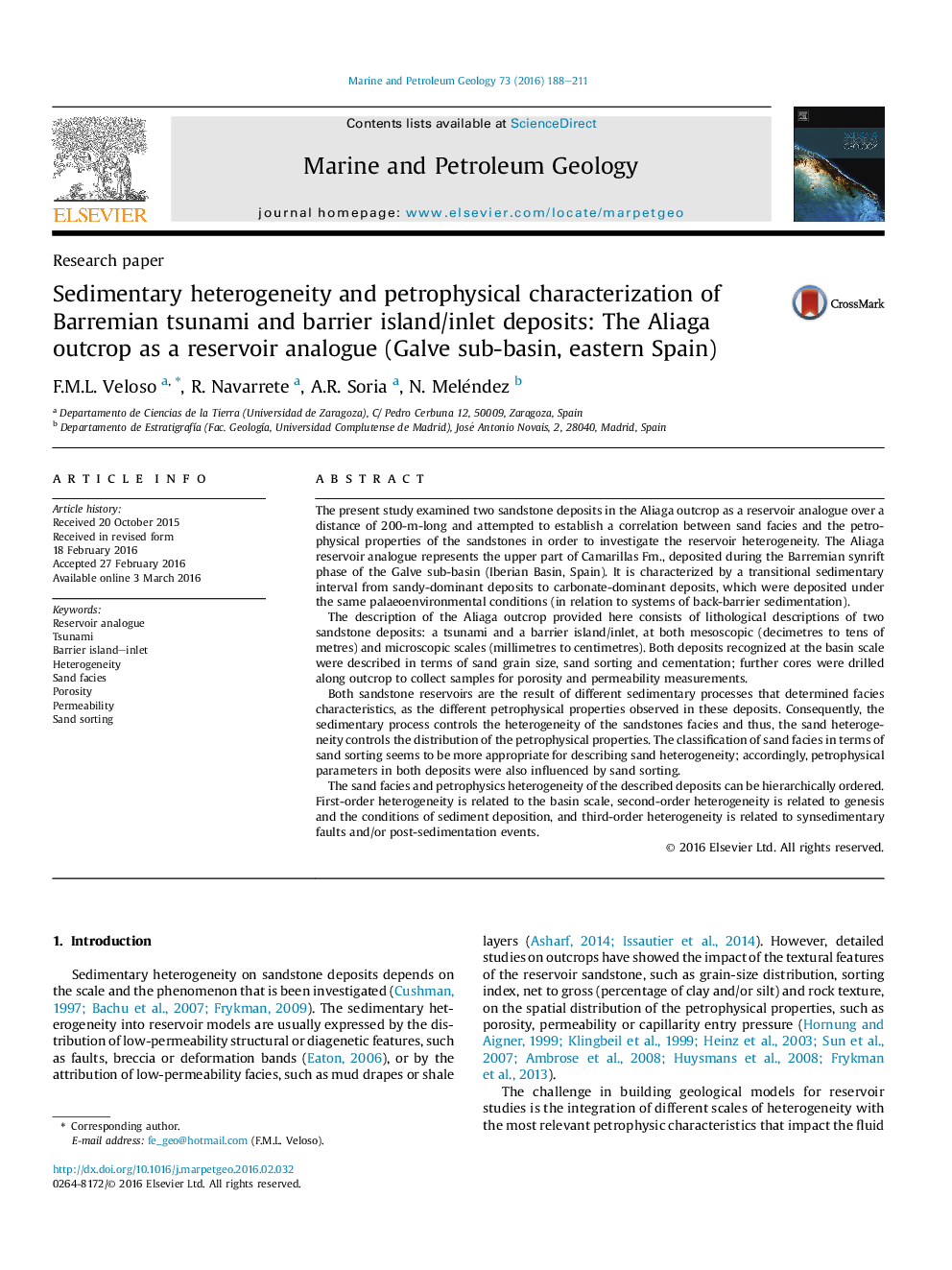| کد مقاله | کد نشریه | سال انتشار | مقاله انگلیسی | نسخه تمام متن |
|---|---|---|---|---|
| 6434788 | 1637154 | 2016 | 24 صفحه PDF | دانلود رایگان |
- Facies classified by sand sorting described the petrophysics variability.
- Sedimentary process controls the facies distribution, thus the petrophysics distribution.
- Although tsunami deposit has great variation of sand grain size, the sand is well sorted.
- B.i./Inlet deposit has heterogeneous distribution of facies and great variability of porosity.
- Porosity and permeability are strongly correlated in both sandstone deposits.
The present study examined two sandstone deposits in the Aliaga outcrop as a reservoir analogue over a distance of 200-m-long and attempted to establish a correlation between sand facies and the petrophysical properties of the sandstones in order to investigate the reservoir heterogeneity. The Aliaga reservoir analogue represents the upper part of Camarillas Fm., deposited during the Barremian synrift phase of the Galve sub-basin (Iberian Basin, Spain). It is characterized by a transitional sedimentary interval from sandy-dominant deposits to carbonate-dominant deposits, which were deposited under the same palaeoenvironmental conditions (in relation to systems of back-barrier sedimentation).The description of the Aliaga outcrop provided here consists of lithological descriptions of two sandstone deposits: a tsunami and a barrier island/inlet, at both mesoscopic (decimetres to tens of metres) and microscopic scales (millimetres to centimetres). Both deposits recognized at the basin scale were described in terms of sand grain size, sand sorting and cementation; further cores were drilled along outcrop to collect samples for porosity and permeability measurements.Both sandstone reservoirs are the result of different sedimentary processes that determined facies characteristics, as the different petrophysical properties observed in these deposits. Consequently, the sedimentary process controls the heterogeneity of the sandstones facies and thus, the sand heterogeneity controls the distribution of the petrophysical properties. The classification of sand facies in terms of sand sorting seems to be more appropriate for describing sand heterogeneity; accordingly, petrophysical parameters in both deposits were also influenced by sand sorting.The sand facies and petrophysics heterogeneity of the described deposits can be hierarchically ordered. First-order heterogeneity is related to the basin scale, second-order heterogeneity is related to genesis and the conditions of sediment deposition, and third-order heterogeneity is related to synsedimentary faults and/or post-sedimentation events.
Journal: Marine and Petroleum Geology - Volume 73, May 2016, Pages 188-211
